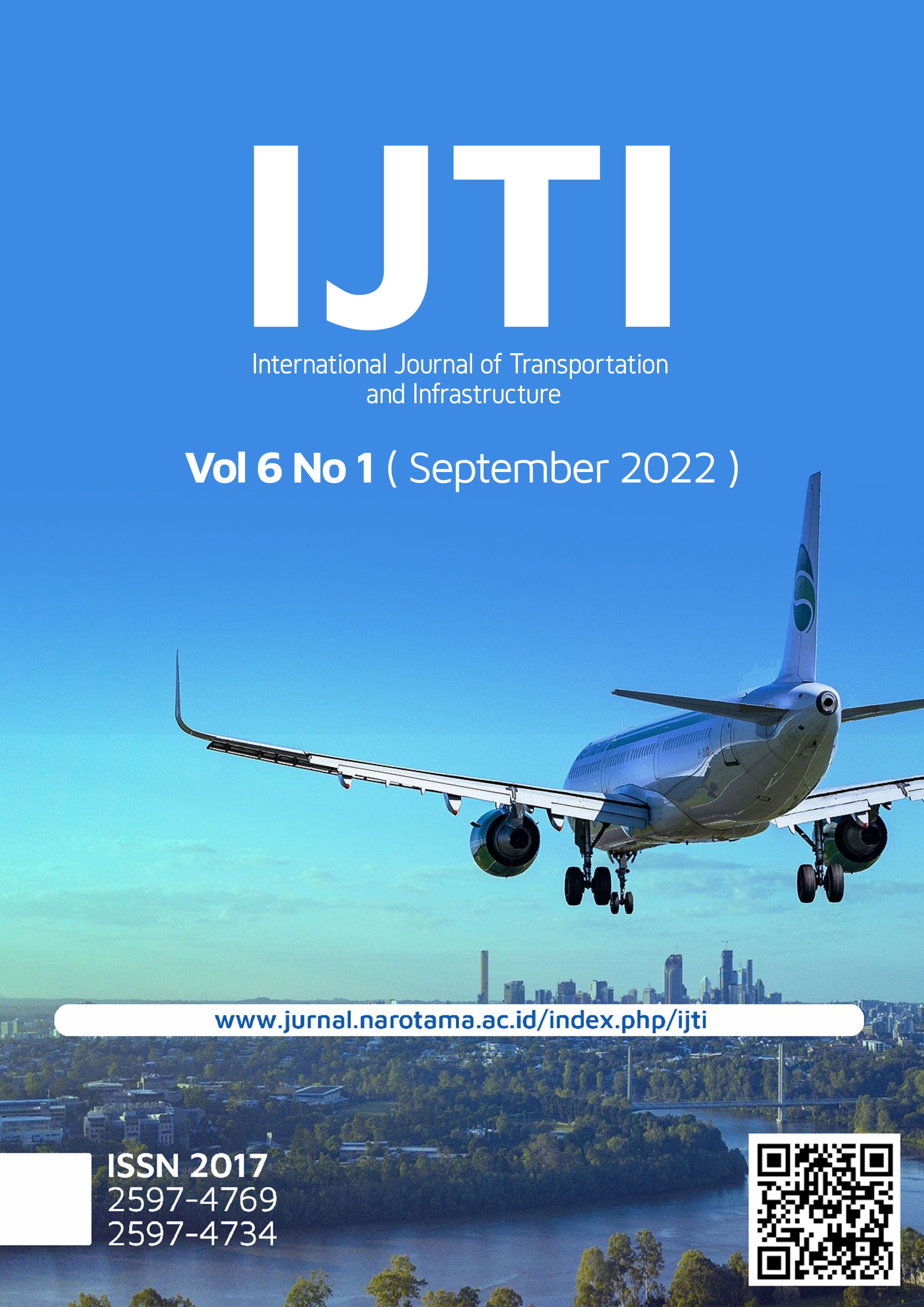Soil Improvement Using the Stone Column Method at the International Port of Tibar, Timor-Leste
Abstract
Stone column (stone column) is one of the soil improvement methods that fall into the category of "reinforcement" or soil strengthening which uses aggregate in the form of gravel or crushed stone to make columns with a certain diameter and depth in the soil layer with the aim of increasing the carrying capacity of the soil and reducing settlement. . The stone column method is intended to detail the soil improvement work in this project both on land and at sea. The stone column method has been used to improve weak soils since the 1950s. The rigid granular elements of the stone column increase the stiffness and shear resistance of the weak soil and the permeable nature of the column accelerates consolidation settlement so that residual settlement can be limited to a tolerable value. Various design methods have been used to design stone columns over the years ranging from simple hand calculations to complex and highly complex numerical models. Important considerations include the type of structure to be supported, in-situ soil properties of stone column material parameters, area replacement ratio, stress concentration and consolidation time. Like other geotechnical methods, the stone column method requires stability checks and workability checks. Not only the stone column method but there are several design methods that will be discussed in this journal paper and will highlight some of the advantages and disadvantages of each approach. Importantly, all soil improvement methods, whether simple or complex, must be verified by post-treatment testing with field measurements.
Downloads
References
Dermawan, A. (2020, March 25). Introduction to the Stone Column. Taken back from https://www.rancah.com/education/45546/pengenalan-stone-column/
Han, J. (2015). Principles and Practice of Ground Improvement. Wiley.
Hardiyatmo, HC (1992). Soil Mechanics I. Gramedia.
McCabe, BA (2015, January 16). Ground Improvement Using The Vibro-Stone Column Technique. 1-12.
The Tibar Bay Port Project (TBPP). (2019). Dredging and Reclamation Ground Improvement .
The Tibar Bay Port Project (TBPP). (2019, May 11). Method Statement of Ground Improvement Trial. 3-28.
The Tibar Bay Port Project (TBPP). (2019). Method Statement of Vibrating Tube Stone Column Trial.
The Tibar Bay Port Project (TBPP). (2019). Project HSE Management Plan.
The Tibar Bay Port Project (TBPP). (2020). Design Drawing Schematic Layout of Stone Column.
Verhoef, PN (1994). Geology For Civil Engineering. Erlangga.
W. Sondermann & VR Raju, JD (2019). Practical Design of Vibro Stone Column.
Widodo, Y. (2021). Soil Improvement Technology. Bauer.
Copyright (c) 2022 IJTI International Journal of Transportation and Infrastructure eISSN 2597-4769 pISSN 2597-4734

This work is licensed under a Creative Commons Attribution-ShareAlike 4.0 International License.










